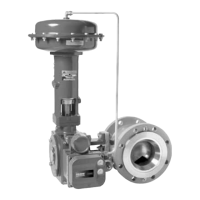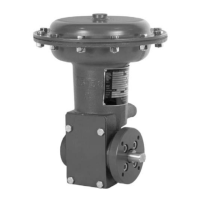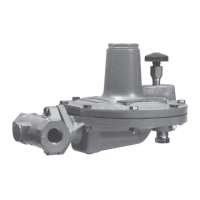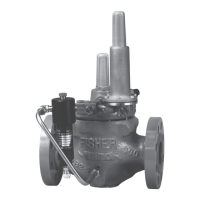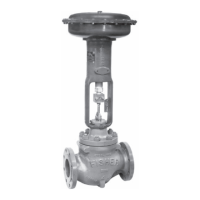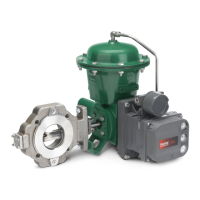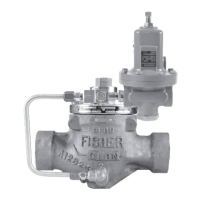133 Series
6
Adjustment
To increase the pressure setting, remove the closing
cap (key 9; Figures 10, 11, 12, and 14) and turn
the adjusting screw (key 11) clockwise; to lower the
setting, turn the adjusting screw counterclockwise.
A pressure gauge should always be used when
adjustments are being made. Do not adjust the spring
to produce an outlet pressure setting above the limit
stamped on the nameplate (key 38), located on the
casing ange. If the required pressure setting is not
within the range of the spring in use, substitute with
the correct spring. Ranges of available springs are
shown in Table 1. When changing the spring, also
change the nameplate (key 38), located on the casing
ange, to indicate the outlet pressure range.
Shutdown
Isolate the regulator from the pressure system and
release pressure from the outlet and the control line.
Inlet pressure will then automatically be released as
the regulator opens up in response to the lowered
pressure on the diaphragm.
Maintenance
!
WARNING
To avoid personal injury, property
damage, or equipment damage
caused by sudden release of pressure
or explosion of accumulated gas,
do not attempt any maintenance or
disassembly without rst isolating the
regulator from system pressure relieving
all internal pressure from the equipment.
Do not loosen the diaphragm casing
cap screws (keys 35 and 36) when
the control spring (key 12) has spring
force applied to it. Release the spring
compression as described in step 6.
Due to normal wear that may occur in gas regulators,
parts must be periodically inspected and replaced
if necessary. The frequency of inspection depends
on the severity of service conditions or state and
federal laws. This section includes instructions
for disassembly and replacement of parts. All key
numbers refer to Figures 10, 11, 12, 14, and 15 except
where indicated.
Types 133H, 133L, and 133Z
Disassembly
1. Disconnect the downstream control line from the
regulator and disconnect the remote vent pipe if
one is used.
Note
Allowing a slight amount of compression
to remain in the regulator spring will
facilitate disassembly of the trim parts.
2. Unscrew the four nuts (key 34) and lift the actuator
portion off the body (key 1). All of the trim parts
will come out of the body with the actuator. The
valve disk (key 28), orice (key 2), and restriction
collar (key 46, Figure 13), if used, can be inspected.
3. For further eld disassembly and inspection, the
actuator may be turned upside down and the
spring case (key 8A) inserted into the body cavity
(see Figure 4).
Use care in performing step 4 to guard
against damage to the balancing
diaphragm (key 22).
CAUTION
Figure 4. Spring Case Inserted in Body for Disassembly. Note
Proper Method of Holding Stem and Sleeve When Loosening or
Tightening Stem Nut.
W1390/IL

